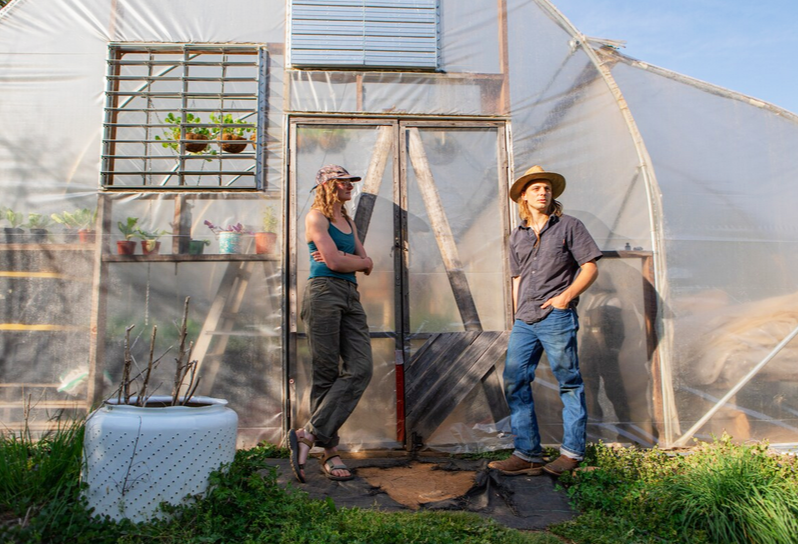The number of farms in the United States has been in decline for quite awhile, but some are turning to homesteading, where property owners use home gardening, lumber production and other subsistence skills to take more control over their lives during uncertain times.
The definition of a homestead varies. For the purists, it means living exclusively off what you can grow, hunt, build or forage. Some even learn leather tanning and make their own clothes from animal hides hunted on their land. But for most, homesteading is more about relying on a combination of self-sufficiency and community dependency. One might build a house out of timber from their forest, harvest vegetables from a backyard garden or eat eggs collected from their own chicken coops, but they’ll also pour store-bought milk onto cornflakes.
Homesteaders are motivated by a range of forces, from a longing to take more control over life to wanting to seek a better diet, says Jessica Shelton, editor of Homestead.org. Most of all, it provides an opportunity to pursue a home life on your own terms. “Some are sick of the hustle and bustle of modern life. Others want to move away from commercialism and all the plastic packaging that comes with it. Others still want to have the cleanest food possible for themselves and their family.”
“The reasons people decide to pick up and head to the country — or to begin a balcony garden in an apartment — are almost as varied as the people themselves,” she adds. “Being a homesteader doesn’t necessarily mean that you live on many acres of land and grow many crops. In some ways, being a homesteader is a state of mind just as much as it is a state of being.”
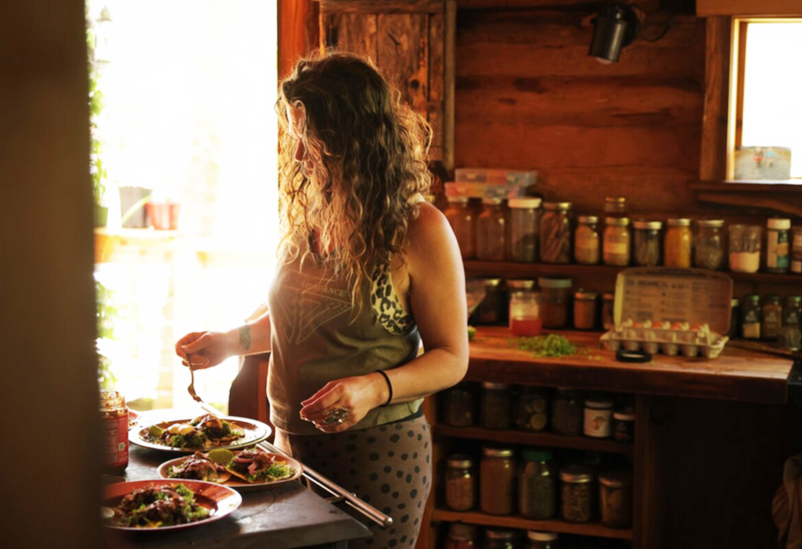 It’s a common misconception that the goal of homesteading is total self-sufficiency, says Natalie Bogwalker, owner of Wild Abundance, a hands-on education center that teaches homesteading skills near Asheville. She defines homesteading simply as “living in a way that meets a lot of your needs from the land.” That can include gardening, permaculture, carpentry, building infrastructure such as water systems, agriculture systems and roads. A veteran homesteader who has been living largely off the land for more than 20 years, Bogwalker says community is a crucial part of making the lifestyle sustainable.
It’s a common misconception that the goal of homesteading is total self-sufficiency, says Natalie Bogwalker, owner of Wild Abundance, a hands-on education center that teaches homesteading skills near Asheville. She defines homesteading simply as “living in a way that meets a lot of your needs from the land.” That can include gardening, permaculture, carpentry, building infrastructure such as water systems, agriculture systems and roads. A veteran homesteader who has been living largely off the land for more than 20 years, Bogwalker says community is a crucial part of making the lifestyle sustainable.
“The idea of one person having to master all of these things is kind of silly,” she says. “It’s so important to not try to do everything yourself.”
Bogwalker says she initially had a purist attitude. She traveled the world living in small intentional communities, focusing on developing wild survival skills while foraging food and growing what she couldn’t find. When she moved to North Carolina, she lived in a bark hut she constructed herself. “I ended up getting super idealistic,” she says. “My life has become less purist and more integrated with modern life throughout time.”
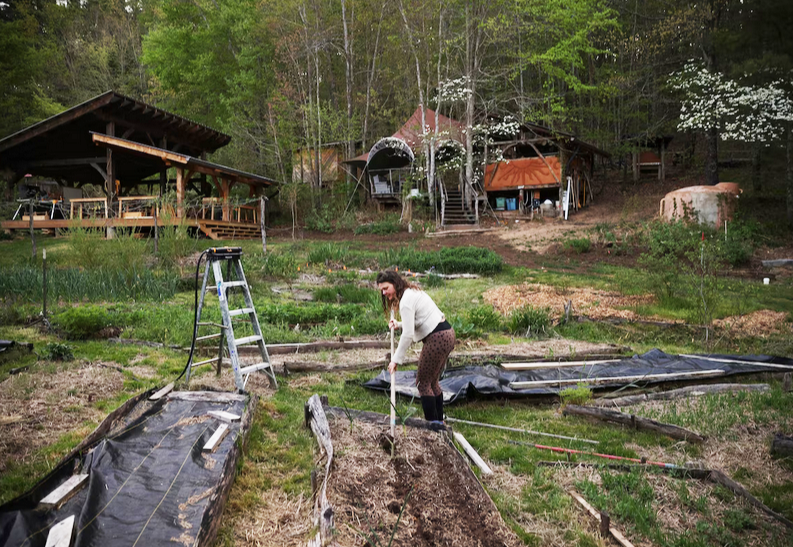 In 2011, she bought a seven-acre piece of mountain land and began transforming it into a working homestead and school. She built a 12-by-16-foot log cabin from white pine trees on the land. Today, deer leather outfits she tanned hang on the wall next to a bow and arrow that belongs to her 6-year-old daughter. Shelves are full of books about permaculture and native herb cultivation.
In 2011, she bought a seven-acre piece of mountain land and began transforming it into a working homestead and school. She built a 12-by-16-foot log cabin from white pine trees on the land. Today, deer leather outfits she tanned hang on the wall next to a bow and arrow that belongs to her 6-year-old daughter. Shelves are full of books about permaculture and native herb cultivation.
“There has been concern about a breakdown of systems,” she says. “A good number of people feel skeptical about the longevity of our food systems as they are now. Covid really added to that.”
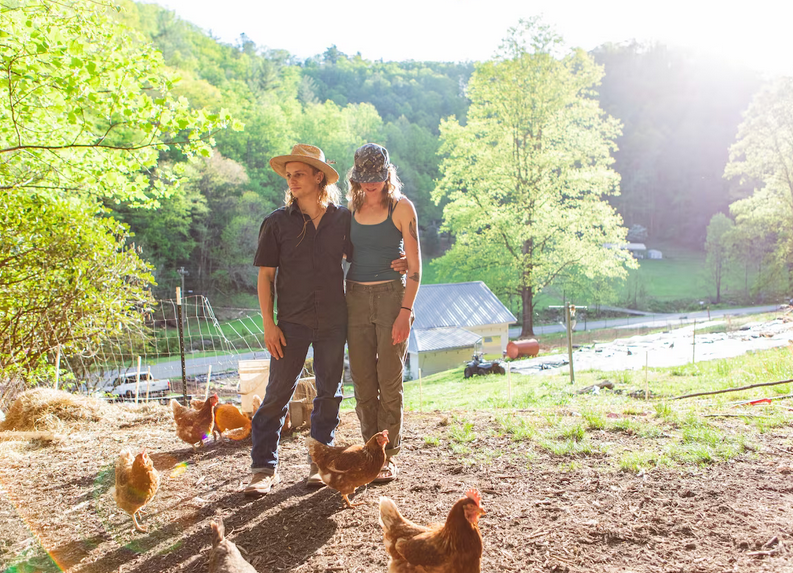 Jess McClelland and Alex O’Neill are modern-day homesteaders who have traded many contemporary conveniences to grow much of their own food and live off the land on their 16-acre property in rural Appalachia. “We had never even thought about homesteading seriously until covid,” McClelland says.
Jess McClelland and Alex O’Neill are modern-day homesteaders who have traded many contemporary conveniences to grow much of their own food and live off the land on their 16-acre property in rural Appalachia. “We had never even thought about homesteading seriously until covid,” McClelland says.
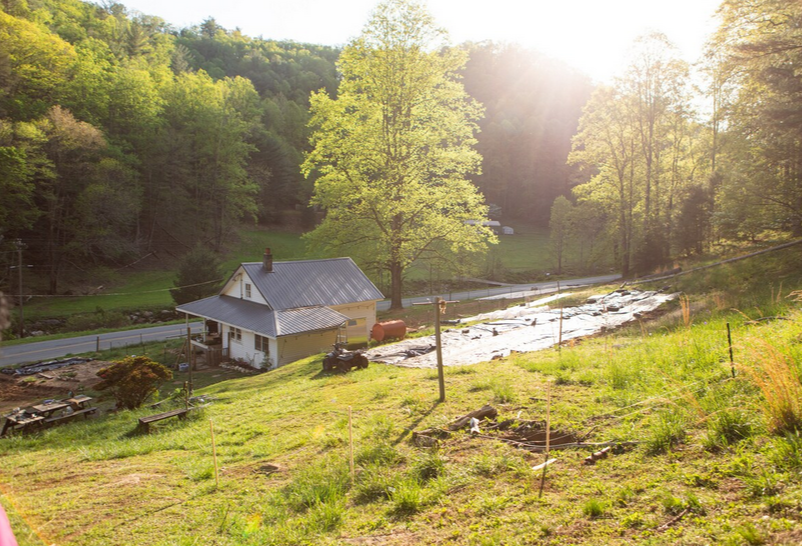 In January 2022, McClelland and O’Neill bought a two bedroom, one bath white country house tucked in the Appalachian High Country. The home, which was built in the 1940s, had been vacant for years, but the land had previously been used for agriculture and as pasture for cows. A narrow path cut through the woods culminates in a small graveyard filled with neat rows of stones that date to the mid-1800s. “You definitely get the sense that things have been happening here for a very long time,” O’Neill says, surveying the gravestones. “It drives me to be a steward of the land.”
In January 2022, McClelland and O’Neill bought a two bedroom, one bath white country house tucked in the Appalachian High Country. The home, which was built in the 1940s, had been vacant for years, but the land had previously been used for agriculture and as pasture for cows. A narrow path cut through the woods culminates in a small graveyard filled with neat rows of stones that date to the mid-1800s. “You definitely get the sense that things have been happening here for a very long time,” O’Neill says, surveying the gravestones. “It drives me to be a steward of the land.”
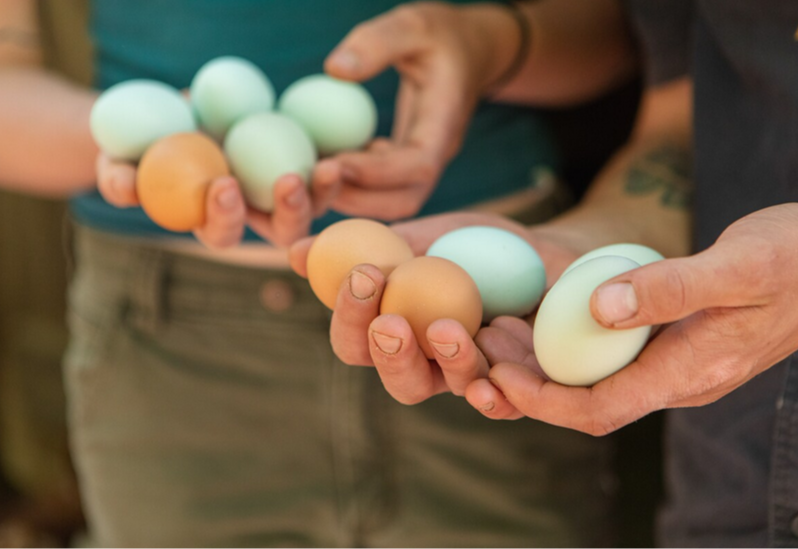 Along the roadside, they’ve planted tulips and native wildflowers to sell at the flower market. They converted the cow barn into a chicken coop and filled it with around 40 hens and a rooster. They’re culling the trees in the woods behind the house, which make up most of the acreage, to create grazing land for sheep. They started deer hunting last fall, taking home 60 pounds of meat, enough to feed them both for the winter.
Along the roadside, they’ve planted tulips and native wildflowers to sell at the flower market. They converted the cow barn into a chicken coop and filled it with around 40 hens and a rooster. They’re culling the trees in the woods behind the house, which make up most of the acreage, to create grazing land for sheep. They started deer hunting last fall, taking home 60 pounds of meat, enough to feed them both for the winter.
“The primary thing for us is to be able to produce our own food,” McClelland says. “I think it’s very powerful to have a connection to your food and how it’s grown and to be a part of that process.”
They also belong to the High Country Food Hub, where residents can order food online directly from local farmers and arrange a contactless pickup. The organization allowed farmers who lost their restaurant contracts during the pandemic to sell directly to a new customer base.
McClelland and O’Neill quickly learned that new homesteaders face a steep learning curve. McClelland studied agroecology in college, but says that the theoretical classroom work barely prepared her for the rigors of the real thing. “None of them were hands on,” she says of the classes. “You learn the theory, but then you go and do it and there are so many variables when you’re growing things on the homestead. You have to make a lot of adaptations.”Homesteading requires many upfront costs, which inflation has only made worse. Prices for lumber, chicken wire and even seeds have skyrocketed. They have found ways to make it work financially — and realized quickly that strong relationships with neighbors and other homesteaders help.
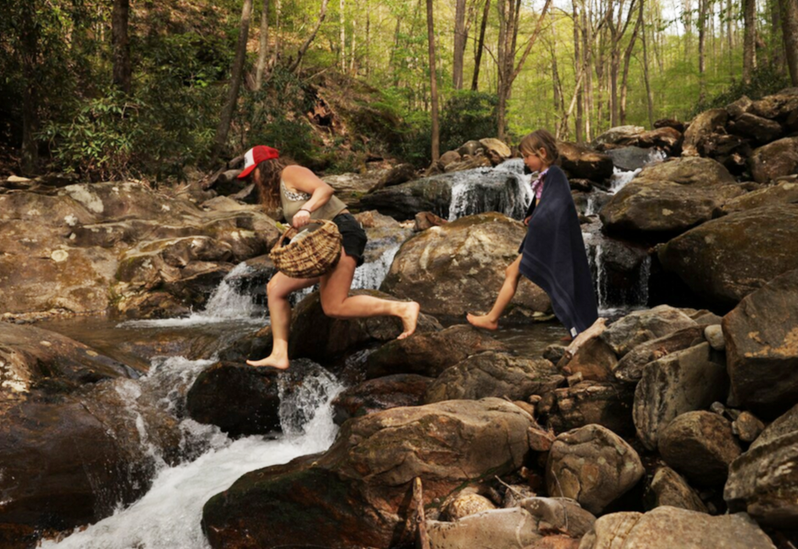 For newcomers to homesteading, Bogwalker offers sound advice: Go slow. Instead of immediately investing thousands of dollars in building projects and agricultural tools, observe the land carefully for a full year before diving in. Noting where the sun hits during the growing season will tell you where to plant your gardens, and understanding the flow of water on the ground will inform where — and where not — to build. After two decades, she’s learned that it’s fine to give yourself a break and outsource needs to others in the community or the town.
For newcomers to homesteading, Bogwalker offers sound advice: Go slow. Instead of immediately investing thousands of dollars in building projects and agricultural tools, observe the land carefully for a full year before diving in. Noting where the sun hits during the growing season will tell you where to plant your gardens, and understanding the flow of water on the ground will inform where — and where not — to build. After two decades, she’s learned that it’s fine to give yourself a break and outsource needs to others in the community or the town.
You can read the original article at www.washingtonpost.com

